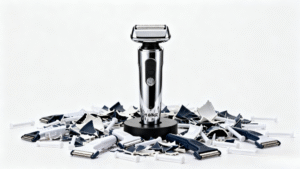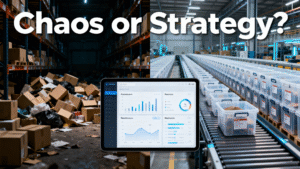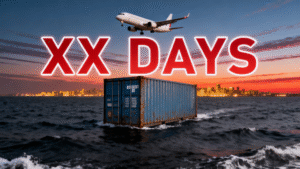In the age of e-commerce, your product’s packaging is often the first physical interaction a customer has with your brand. It’s the handshake, the first impression, and a powerful marketing tool all in one. Yet, many brands pour 99% of their resources into the product itself and leave packaging as a last-minute afterthought. This approach can lead to a disappointing unboxing experience, damaged goods, and a missed opportunity to tell your brand’s story.
This guide will demystify the world of packaging sourcing. We’ll provide a complete roadmap for creating high-quality custom product packaging that not only protects your body trimmer but also elevates your brand from a simple product to a memorable experience. For any brand looking to compete in the modern market, mastering this process is essential.
1. The Two Pillars of Packaging Design
Before you can source a box, you need a design. Great product packaging design is a careful balance of engineering and artistry, of form and function. It can be broken down into two core components.
- Pillar 1: Structural Design (The Engineering): This is the blueprint of your packaging. It’s about the physical construction that protects your product. Key considerations include:
- Protection: The design must be robust enough to withstand shipping. This often involves drop tests and transit simulations.
- Product Fit: The internal structure—whether it’s a custom-molded paper pulp tray, an EVA foam insert, or a simple cardboard divider—must hold the body trimmer and its accessories securely to prevent rattling and damage.
- The Unboxing Experience: How does the box open? Is it a standard tuck-end box, a premium magnetic closure box, or a modern sleeve design? The structural design dictates the physical ritual of unboxing. The primary deliverable from this stage is a dieline, a flat, 2D template that shows all the cuts, creases, and folds of the box. Your packaging supplier will need this file for manufacturing.
- Pillar 2: Graphic Design (The Branding): This is the visual identity of your packaging. It’s what communicates your brand’s personality before the customer even touches the product. Key considerations include:
- Branding: Logo placement, brand colors, and typography.
- Information: Product name, key features, and any legally required regulatory symbols.
- Finish: Will the box have a matte or gloss lamination? Will you use special finishes like spot UV, embossing, or foil stamping to add a premium touch? It’s crucial to understand the difference between CMYK vs Pantone color modes to ensure color consistency in printing.

2. Choosing the Right Packaging Materials
The materials you choose will impact your cost, the perceived value of your product, and your brand’s commitment to sustainability. Here is a breakdown of common options for a product like a body trimmer.
| Material Category | Specific Options | Best For | Key Considerations |
| Paperboard Boxes | Kraft paper, SBS (Solid Bleached Sulfate), Coated paper | The main retail box (e.g., for the body trimmer). | Grammage (thickness/weight), print finish (matte/gloss lamination), sustainability (FSC-certified). |
| Corrugated Boxes | E-flute, B-flute | E-commerce mailer boxes, master shipping cartons. | Strength, crush resistance, printability for branding. |
| Internal Inserts | Molded paper pulp, EVA foam, Blister packs (PET/PVC) | Securely holding the product and accessories in place. | Cost, level of protection required, sustainability (pulp is eco-friendly, foam is premium). |
| Manuals & Cards | Art paper, offset paper | User manuals, thank you cards, warranty cards. | Paperweight, printing quality. A small but crucial part of the experience. |

3. How to Find and Vet a Packaging Supplier
Finding a reliable packaging supplier is just as important as finding a good product manufacturer. Here’s how to approach it.
- Where to Look: Platforms like Alibaba are a good starting point for overseas suppliers. For domestic options, industry directories and local trade shows are excellent resources. There are also specialized packaging sourcing platforms that can connect you with vetted factories.
- Vetting Checklist: Before committing, evaluate potential suppliers on these key points:
- Portfolio: Do they have experience creating packaging for consumer electronics? Ask to see examples of their work.
- Capabilities: Can they handle your desired materials and finishes? Do they have in-house structural and graphic design support if you need it?
- Quality Certifications: A factory with ISO 9001 (for quality management) or FSC certification (for sustainable paper sourcing) is a strong positive signal.
- Communication: Are they responsive, professional, and clear in their communication? Poor communication during the quoting stage is a major red flag for the future.
- MOQ (Minimum Order Quantity): What is their MOQ for your custom box? Ensure it aligns with your planned production volume.

4. The Prototyping and Production Process
Once you’ve chosen a supplier, the process generally follows these steps.
- Request a Quote: Provide your final dieline and graphic design files to get an accurate, itemized quote.
- Order a Prototype / Sample: Never skip this step. A physical sample is the only way to truly test the box’s structural integrity, the fit of your product, and the accuracy of the printed colors. Test it, drop it, and make sure it’s perfect.
- Place the Bulk Order: Once you have approved the final sample, you can confidently place your mass production order.
- Arrange Quality Control (QC): Just like your main product, your packaging should also undergo a QC inspection before it ships. Check for printing errors, color consistency, glue strength, and structural defects.
Conclusion: Your Packaging is Your Silent Salesperson

Sourcing custom product packaging is a complex but critically important process. A well-executed package does more than just protect your product; it enhances your brand’s perceived value, communicates quality, and creates a memorable unboxing experience that can turn a first-time buyer into a loyal fan. By following a structured packaging sourcing process—from design and material selection to supplier vetting and quality control—you can transform a simple box into one of your most powerful marketing assets.





